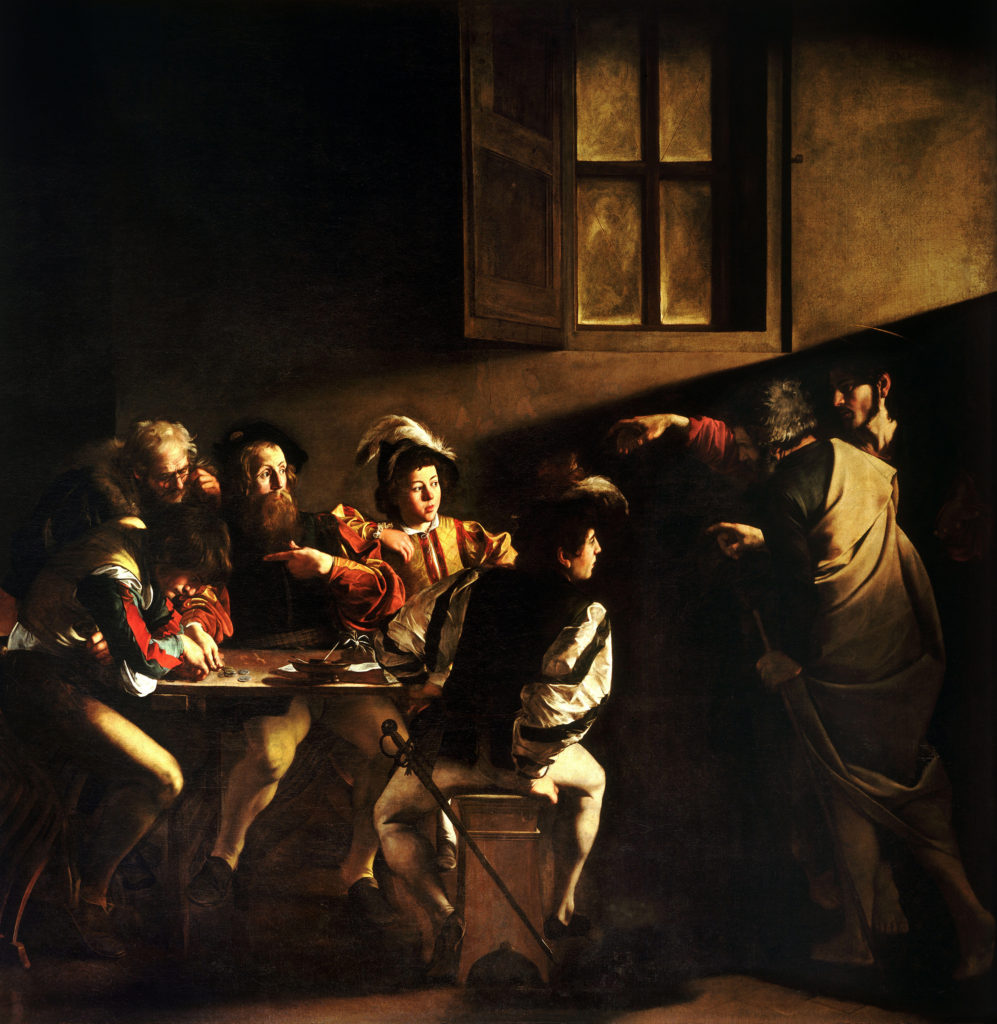Matthew is a profane man, a tax collector. Then Jesus says, “Follow me.” And Matthew does.
In “The Calling of St. Matthew” (1599-1600), Michelangelo Merisi da Caravaggio captures the biblical tale with power and drama. Yet the painting also poses questions. Which figure, exactly, is Matthew? How did he arrive at this place and time? What happens before he’s called, and what happens afterward?
“Painters control color, light, form, composition and scale,” said William Wallace, who teaches the seminar “Caravaggio: Master and Murderer.” “But they struggle to imply sound and motion. Rather than just study the painting as a frozen moment in time, I thought it would be interesting to work out, kinesthetically, the whole sequence of events.”
Wallace is the Barbara Murphy Bryant Distinguished Professor of Art History in Arts & Sciences at Washington University in St. Louis.
Earlier this fall, Wallace enlisted two colleagues from the Performing Arts Department in Arts & Sciences. David Marchant, professor of practice in dance, helped students deconstruct how Caravaggio choreographs the scene. Robert Henke, professor of drama and of comparative literature, helped explore different scenarios and potential outcomes.
The group then staged the scene, in several iterations, for a small audience in Mallinckrodt Center. The differences are subtle but instructive. In one version, Matthew is reluctant; in another, he comes willingly. His companions are awestruck, or puzzled, or envious.
“It’s okay to imagine something that’s outside the frame of the painting,” Marchant said. “Assuming that we already know the story limits its potential. Alternate stories open up other possibilities.”
Wallace concluded, “Art historians should do more dancing.”
